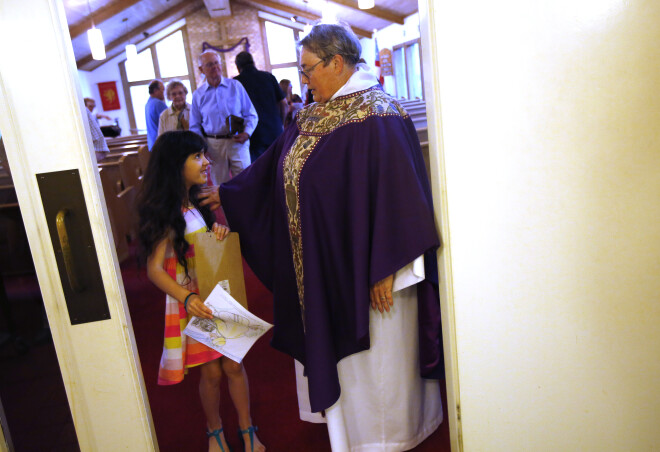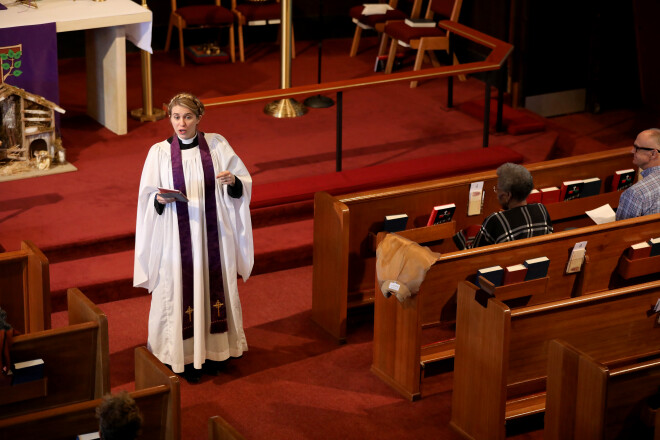The Church- It's Fellowship (Togetherness, Community)

I want to offer descriptions of those in the nave (the ship, itself a picture of the Church evoking Jonah and the disciples) in relation to the actual experience of Christians week by week. You might say that the twofoldness of the Church from the last entry points to the experience of the Church as flawed or broken. For a key passage from the New Testament we might have chosen the parable of the net that hauls in both fish and trash, and which is to be sorted out, not by us, but by the Lord on the Last Day.
In this entry I want to focus on the togetherness of the Church, its reality as a corporate reality, its ‘us-ness.’ While we hear Christ’s call as individuals, to be sure, we are called into a people, a family, a body, a society. The book that expresses our Christian faith guides our ‘common prayer.’ A good passage to listen to here I Peter 2. There we are compared to stones which together make up the Temple, whose shared purpose is offering sacrifice (which is our praise and thanksgiving for the one sacrifice of Jesus, who is Himself compared to the cornerstone of that one edifice). Peter also calls us ‘a priesthood,’ together, a people, a nation.
To be sure, there are many metaphors for the Church in the New Testament (some of which can be found in a classic text like Avery Dulles’ Models of the Church). But they all share this together- factor, for which reason our being a people should come first. Think of it this way - there are lots of ways to describe Americans, and we have our divisions to be sure. But America as a single people is a fact, historical, sociological, political, before it is an idea. So it is with the Church. (And obviously this challenges some of the individualist and consumerist assumptions we make so easily.
Walk down main street in most towns, and the number of different denominations belies this claim, doesn’t it? How is the Church, as the Creed says, ‘one’? This is a fair indictment. At the very least we should say that denominationalism and divisiveness in the Church are scandalous, that is, contrary to the Church’s very nature. We ought constantly to be thinking and acting in ways that recognize their problematic nature.
Saying that the Church is a people also says that it conveys an identity, or more precisely, our identity in Christ Jesus is one that implies initiation through baptism and thus a shared identity. This is the main answer to one of the great issues in the cultural struggles of our time.
Google and discuss Avery Dulles’ Models of the Church



